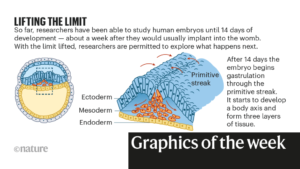Computer Scientists Find a Key Research Algorithm’s Limits
Many features of fashionable utilized analysis depend on a essential algorithm referred to as gradient descent. This is a process typically used for locating the most important or smallest values of a specific mathematical perform—a course of generally known as optimizing the perform. It can be utilized to calculate something from essentially the most worthwhile approach to manufacture a product to the easiest way to assign shifts to employees.

Many features of fashionable utilized analysis depend on a essential algorithm referred to as gradient descent. This is a process typically used for locating the most important or smallest values of a specific mathematical perform—a course of generally known as optimizing the perform. It can be utilized to calculate something from essentially the most worthwhile approach to manufacture a product to the easiest way to assign shifts to employees.
Yet regardless of this widespread usefulness, researchers have by no means absolutely understood which conditions the algorithm struggles with most. Now, new work explains it, establishing that gradient descent, at coronary heart, tackles a basically troublesome computational drawback. The new consequence locations limits on the kind of efficiency researchers can count on from the approach specifically functions.
“There is a kind of worst-case hardness to it that is worth knowing about,” stated Paul Goldberg of the University of Oxford, coauthor of the work together with John Fearnley and Rahul Savani of the University of Liverpool and Alexandros Hollender of Oxford. The consequence obtained a Best Paper Award in June on the annual .
You can think about a perform as a panorama, the place the elevation of the land is the same as the worth of the perform (the “profit”) at that individual spot. Gradient descent searches for the perform’s native minimal by in search of the course of steepest ascent at a given location and looking out downhill away from it. The slope of the panorama known as the gradient, therefore the title gradient descent.
(adsbygoogle = window.adsbygoogle || []).push({});
Gradient descent is an important software of contemporary utilized analysis, however there are a lot of widespread issues for which it doesn’t work nicely. But earlier than this analysis, there was no complete understanding of precisely what makes gradient descent battle and when—questions one other space of pc science generally known as computational complexity idea helped to reply.
“A lot of the work in gradient descent was not talking with complexity theory,” stated Costis Daskalakis of the Massachusetts Institute of Technology.
Computational complexity is the examine of the sources, usually computation time, required to unravel or confirm the options to totally different computing issues. Researchers kind issues into totally different courses, with all issues in the identical class sharing some elementary computational traits.
To take an instance—one which’s related to the brand new paper—think about a city the place there are extra individuals than homes and everybody lives in a home. You’re given a cellphone e-book with the names and addresses of everybody on the town, and also you’re requested to seek out two individuals who dwell in the identical home. You know you’ll find a solution, as a result of there are extra individuals than homes, however it might take some trying (particularly in the event that they don’t share a final title).
This query belongs to a complexity class referred to as TFNP, brief for “total function nondeterministic polynomial.” It is the gathering of all computational issues which might be assured to have options and whose options might be checked for correctness shortly. The researchers targeted on the intersection of two subsets of issues inside TFNP.
The first subset known as PLS (polynomial native search). This is a assortment of issues that contain discovering the minimal or most worth of a perform in a specific area. These issues are assured to have solutions that may be discovered by means of comparatively simple reasoning.
One drawback that falls into the PLS class is the duty of planning a route that means that you can go to some mounted variety of cities with the shortest journey distance doable given that you could solely ever change the journey by switching the order of any pair of consecutive cities within the tour. It’s simple to calculate the size of any proposed route and, with a restrict on the methods you may tweak the itinerary, it’s simple to see which adjustments shorten the journey. You’re assured to finally discover a route you may’t enhance with a suitable transfer—a native minimal.
The second subset of issues is PPAD (polynomial parity arguments on directed graphs). These issues have options that emerge from a extra difficult course of referred to as Brouwer’s mounted level theorem. The theorem says that for any steady perform, there may be assured to be one level that the perform leaves unchanged—a mounted level, because it’s identified. This is true in each day life. If you stir a glass of water, the concept ensures that there completely have to be one particle of water that may find yourself in the identical place it began from.



